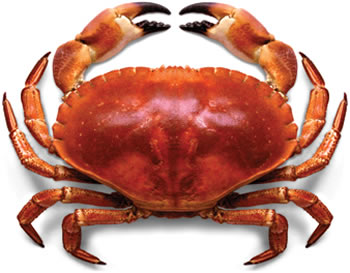

Male red crabs are usually larger than the females, but the feminine abdomen is broader than the masculine one is. Their bright red appendages are large for the small carapace, yet the claws are small. The carapace is round shaped with no serrated margins or frontal teeth. They have bright red appendages with a dark red carapace that measures about 11 centimetres. Red crab is only found in the Christmas Island and the Cocos Island of the Indian Ocean. Red crab is most popularly known as the Christmas Island red crab, and its scientific name is Gecarcoidea natalis. It is fascinating to know that one female blue crab can produce an enormous number of eggs such as more than 8,000,000 in a lifetime. Blue crabs are omnivorous they clean the sea by feeding on decaying matter of animals, but their preference to eat shelled bivalves and small fish should also be noted. They show clear sexual dimorphism, which features most prominently in the shape of their abdomen, where it is slender and long in males while females have a rounded and dome-shaped abdomen.īlue crabs are popular as a food for people, especially around Chesapeake city on the east coast of Virginia, United States and in the Gulf of Mexico. The carapace measures about 230 millimetres, and it bears four frontal teeth, which is an identification feature from other related crab species in the Atlantic Ocean.

These crabs have beautiful blue colour appendages with a blackish blue carapace. As one of its common names suggest, blue crabs are natively found in the Atlantic Ocean, yet specifically lives around the western edge of Atlantic coastal waters. Blue crab and red crab exhibit a range of differences with regard to physical features, behavioural characteristics, ecology, food values for human, and few other aspects.īlue crab is scientifically known as Callinectes sapidus, yet the names Chesapeake blue crab, Atlantic blue crab are also in the use. Different crab species are of different importance, where blue and red crabs have not been a difference to that rule.

Crabs become important in many ways, but their importance is known widely as a delicious food for humans, yet the ecological roles that they play is also of great value to the nature.


 0 kommentar(er)
0 kommentar(er)
